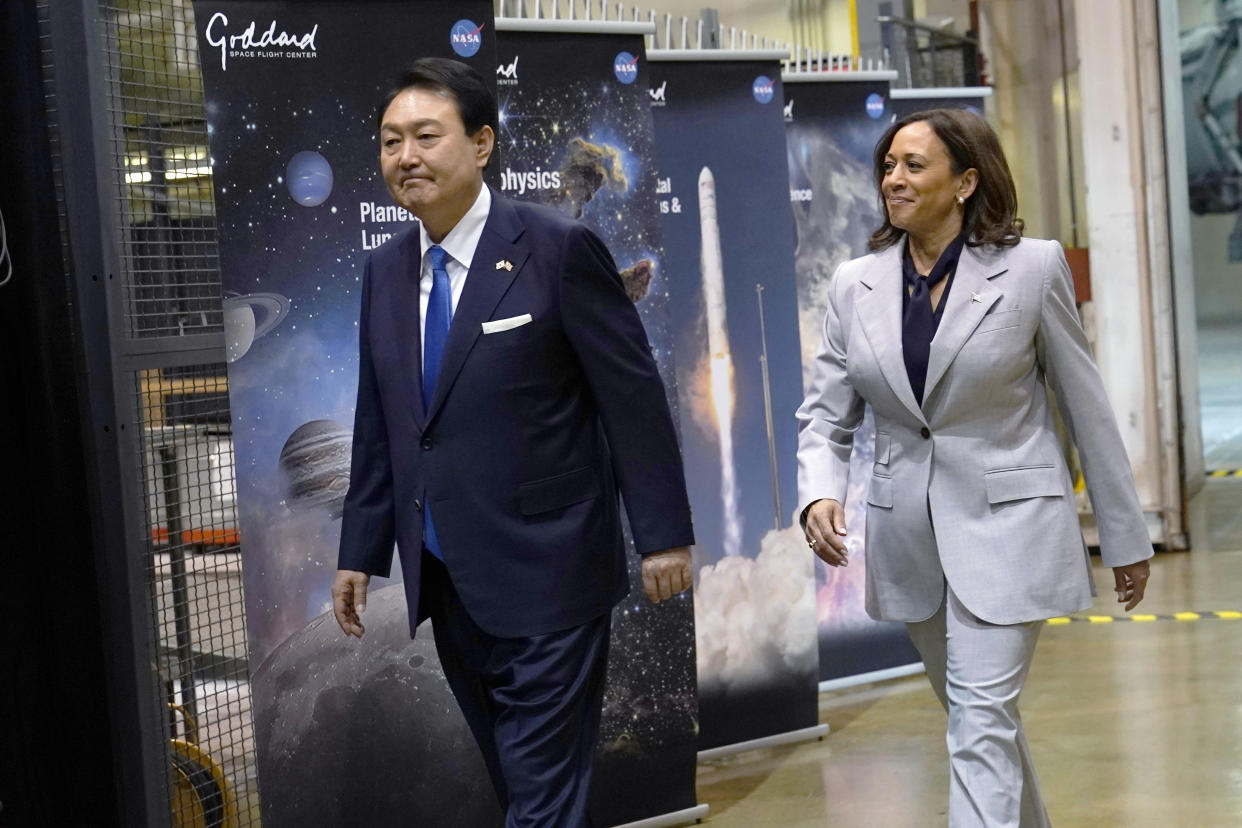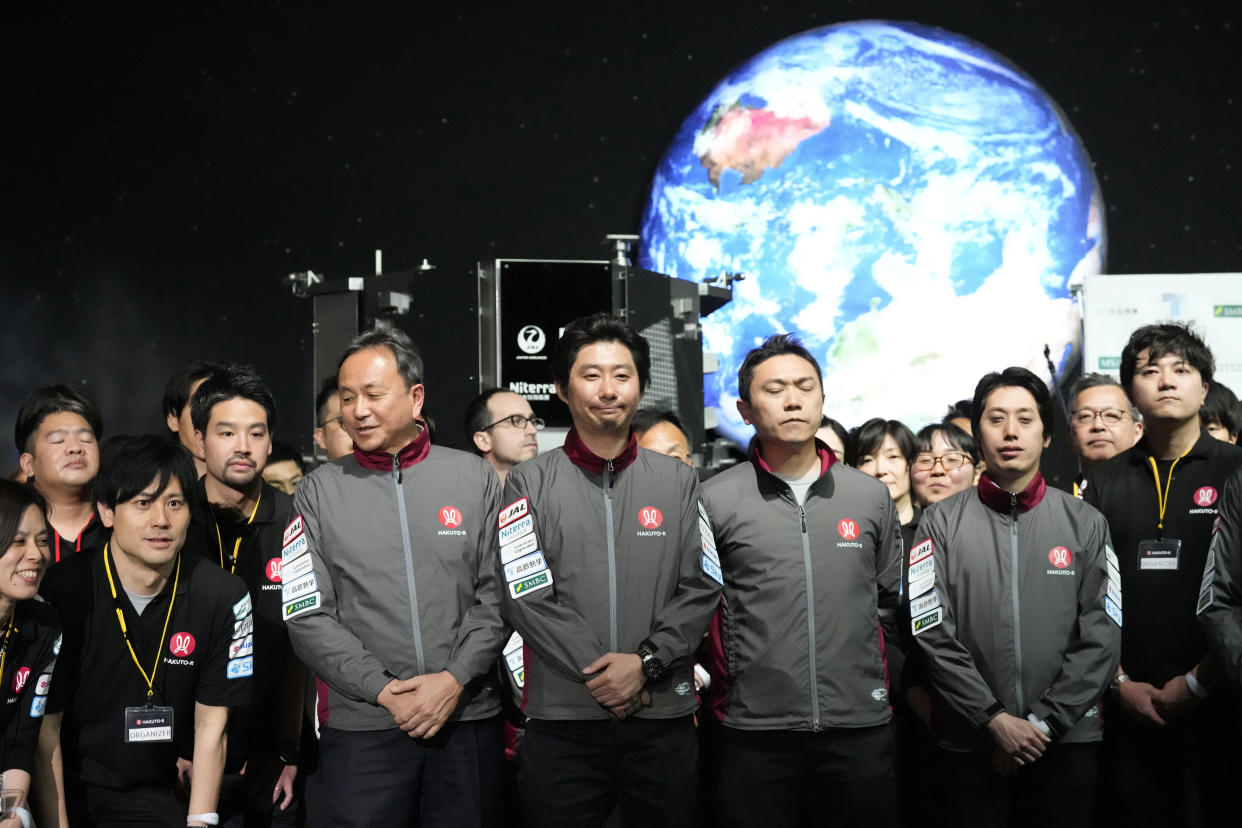NASA is getting into the rideshare business — here’s what you missed this week in outer space
Welcome to This Week in Outer Space, where you’ll find a roundup of the best space coverage from Yahoo News and our partners from the past week or so. Last week, we learned that “rapid unscheduled disassembly” is a fun way to say something exploded and discovered that the Pentagon has a plan in case it ever discovers aliens. This week, we’ve got crash landings on the moon and in Norway, a delightful trip outside the ISS and more.
‘A rideshare program for space exploration’
That’s how Vice President Kamala Harris described NASA’s Commercial Lunar Payload Services program, which will see the U.S. space agency acting as the go-between for people who have things to put on the moon and private companies that can handle the literal rocket science needed to make it happen. Several corporate spaceflight operations have already been tapped to helm the flights, with South Korea set to be one of the first to hail a ride.

While the U.S. and South Korea are already working together to launch an orbital mission to the moon, a South Korean lunar landing might not be far behind. On Monday, at a press conference with South Korean President Yoon Suk Yeol, Harris announced that the two countries had signed a joint statement to strengthen cooperation in space exploration and that “South Korea will soon fly payloads through NASA’s Commercial Payload Services program.”
As NASA and its international partners are gearing up to make long-term manned missions to the moon a reality, the Commercial Lunar Payload Services program will play a major role in opening up unmanned supply lines to the lunar surface.
Norway and Sweden clash over a rocket launch
The geopolitical equivalent of a kid throwing a baseball into a neighbor’s window is currently playing out in Scandinavia. On Monday, the Swedish Space Corporation accidentally crashed a research rocket across the border in Norway — and the Norwegians aren’t happy about it. The launch, which was commissioned by the European Space Agency to conduct experiments in zero gravity, took off from the Esrange Space Center in northern Sweden and missed its landing by about 15 miles to the west, resulting in a crash landing on an uninhabited Norwegian mountainside.
Luckily, no one was hurt, but it seems Norway is less concerned about the crash itself and more about how it was handled afterward. According to statements from the Norwegian foreign ministry, not only did the Swedes take their time to notify them of the incident, but they also crossed the border to retrieve it without permission. While an investigation is underway, it’s unlikely there will be any long-term damage to the relationship between the two Scandinavian nations.
They were so close: ispace made it to the moon but crashed at the last second
Some bad news for the Tokyo-based spaceflight company ispace, which hoped to be the first private company to land an unmanned mission on the moon this week. The Hakuto-R Mission 1 lander, which was launched aboard a SpaceX rocket in December, lost contact with mission control moments before its scheduled touchdown and is believed to have crashed.

To add insult to injury, ispace had gathered its employees and members of the press to witness the landing live — so senior leadership had to deliver the news in real time and in person — and since then, ispace stock has plummeted nearly 50%.
Mr. Nelson goes to Washington
On Thursday, NASA Director Bill Nelson appeared before the House Science, Space and Technology Committee to talk about the agency’s $27.2 billion budget proposal for 2024. However, with Democrats and Republicans at odds over raising the debt ceiling, one potential compromise could see civilian agencies’ budgets slashed by upward of 22% — a scenario that Nelson warned “would be a disaster.”
“You can’t take nearly a quarter of your budget away and suddenly get to where [you’re going]. Especially if we’re in a space race with China, which we are,” Nelson testified.
A springtime spacewalk outside the ISS
Finally, more than 250 miles above Earth, NASA astronaut Steve Bowen and UAE astronaut Sultan al-Neyadi embarked on a spacewalk outside of the International Space Station on a mission to prepare for the installation of a new solar array. Al-Neyadi is now not only the first person from the Arab world to travel to space but also the first to complete a mission outside a spacecraft.
Bonus round! Even more space news from our partners
File this one under “space news after dark”: Gizmodo’s Ed Cara has the steamy details in “Sex in space is inevitable—and scientists say we need to be ready.”
Cellphones apparently work in space (sort of). Texas-based AST SpaceMobile hopes that its success in using an unmodified Samsung Galaxy S22 to place an international call routed through a satellite could help connect the roughly 50% of the planet that doesn’t have cell service.
“Meet 'Scary Barbie,' a black hole slaughtering a star in the brightest way possible,” from Live Science’s Ben Turner, wins the award for most unsettling space headline of the week.
However, Morgan McFall-Johnsen from Business Insider wasn’t too far behind with “A Russian 'inspector' satellite appears to be chasing a secret US military satellite in a game of cat and mouse.”
(Cover illustration: Kyle McCauley/Yahoo News. Photos: NASA, SSC Handout, Getty Images.)

